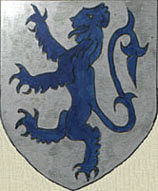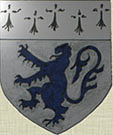
|
August -
NATION CLOSE TO BANKRUPTCY.
The Bank of England warned Prime Minister, MacDonald of possible bankruptcy due to the rising cost of unemployment benefits.
5th August -
DISOWNED BY PARENTS.
Prison for Girl who Victimised Landladies. Maud Pearson, aged 20, of Skelton-in-Cleveland, was sent to prison at Middlesbrough, to-day, for three months on 11 charges of larceny and false pretences.
24th August -
NATIONAL GOVERNMENT FORMED.
The financial crisis grew worse and decisive government action was needed as the leaders of both the Conservative and Liberal Parties met with King George V, and MacDonald, at first to discuss support for the measures to be
taken, but later to discuss the shape of the next government.
|

Petrol driven "Rail Trolley" manned by local employees of the North Eastern Railway Company, who looked after the
line between Saltburn and Brotton. The only one identified is Thomas Rooks of New Skelton.[third from right in the back row] He was a platelayer and had
served through the First War in the Northumberland Fusiliers. The photograph, which was taken some time in the 1930's, has been kindly
contributed by Thomas' son, Owen Rooks.
|
The king played the central role in demanding a National government be formed.
MacDonald agreed and formed a National Government composed of men from all parties with the specific aim of balancing the Budget and restoring confidence.
The new Cabinet had four Labourites (now called "National Labour Party") who stood with MacDonald, plus four Conservatives (led by Baldwin, Chamberlain and Snowden) and two Liberals.
Labour unions were strongly opposed and the Labour Party officially repudiated the new National government.
It expelled MacDonald and made Henderson the leader of the main Labour party.
Henderson led it into the general election on 27 October against the three-party National coalition.
It was a disaster for Labour, which was reduced to a small minority of 52.
MacDonald won the largest landslide in British political history.
August -
MEANS TEST.
Since 1911 Unemployment benefit had depended on the level of contributions to an insurance scheme.
Now this was replaced by a Government funded system, which paid out according to need.
|
However, qualification was subject to a strict Means Test, which involved inspection by Government officials of all personal circumstances and assets to ensure that there were no hidden other means of support.
People were told to dispose of anything that could be seen as luxuries or surplus to requirements.
The process left bitter memories of humiliation.
False declarations could result in a jail sentence with hard labour.
The unemployment situation became worse until nation-wide 3 million were claiming and the Government was forced to cut benefits by ten percent.
No one starved to death, but families were given bare subsistence amounts and soup kitchens became a way of life.
A Government report showed that scurvy, rickets and tuberculosis increased as a result of child malnutrition.
19th September -
BRITAIN ABANDONS THE POLICY OF THE POUND LINKED TO THE VALUE OF GOLD.
Speculative attacks on the Pound forced Britain to abandon the Gold Standard.
The British benefited from this departure, as they could now use monetary policy to stimulate the economy.
|

Robert Tatton-Bower.
Cleveland MP 1931 to 1945.
|
27th October -
GENERAL ELECTION - COALITION WIN WITH MAJORITY CONSERVATIVE.
The Labour Party split over the issue of necessary budget reductions and an election was called.
The Coalition National Government won with a majority of Conservative MPs.
Stanley Baldwin's Conservatives 470.
Henderson's Labour 48.
Herbert Samuel's Liberals 32.
Simon's National Liberal's 35.
R MacDonalds National Labour 12.
The Labour MP for Cleveland, William Mansfield, lost his seat by a narrow margin and was replaced by the Conservative, Commander Robert Tatton-Bower, an ex Royal Navy boxing champion.
ELECTRICITY IN HOMES - COUNCIL MEETING.
Local Electricity Companies had started just before the First World War. By this time in Britain as whole about a third of homes had it installed.
But relative to incomes Electricity cost 10 times more than it does today.
Mr M Kirkbright [Brotton] presided at the monthly meeting of the Skelton and Brotton UDC, held in the village Institute, North Skelton.
|
The Electrical Engineer, Mr R L Hewling, reported the number of consumers as 2,025 at the end of May as against 2,021.
A total of 579 lamps was authorised for public lighting and work in connection with the change of pressure scheme was proceeding satisfactorily.
No tenders had been received for the old steam roller and wagon and it was decided they should be retained for the present.
An offer was received from Mr G Hicks of Hollybush Farm to graze 6 bullocks in the Councils field at North Skelton at 2 shilling per week and decided Mr T Coatsworth and Mr Morrison, with the
Surveyor should consult the gentleman on the matter.
|
|
|

North Skelton St Peter's Church Football Team 1930/31.
|

|
NATIONAL CENSUS.
At the National Census of this year Skelton, [including Lingdale, Boosbeck, N Skelton] had 1830 inhabited houses.
[Old Skelton 689 and N Skelton 376].
The population was 7520 [Old Skelton 2629. N Skelton 1509] with 3837 males and 3683 females.
In the last ten years there had been hardly any change in the number of houses and the population had decreased by 1425.
RANTERS BACK IN METHODIST FOLD.
The Primitive and United Methodists are re-united with the Wesleyans to form the Methodists.
CASTLE COUNTY COUNCILLOR.
Margaret Ringrose Wharton was elected for Skelton North as North Riding of Yorks County Councillor and served until 1949.
LOCAL MINES SHORT OF WORK.
N Skelton and Park Pit were working, but South Skelton on stand by, due to lack of demand for iron ore.
|
HEARTBREAK HILL AND DARTMOOR.
About this time Major Perryman of Ormesby Hall rented three acres of land from Mr W H A Wharton of Skelton Castle with the aim of providing work for unemployed Ironstone Miners.
Rather than individual allotments, which many families already worked, the idea was that the out-of-work men would combine in communal efforts to grow produce and keep pigs, hens etc.
In exchange for at least 3 hours daily work participants would share in the produce, rather than receiving cash payments, which would have resulted in the dreaded Means Test reducing any unemployment benefits.
Unfortunately the locations chosen were on ground that local farmers had ignored for centuries:-
1. Two plots off Jenny Fiske Lane at Lingdale, known as Busky Fields, after the gorse bushes that grew there.
2. An area of Moor above Margrove Park, which became known as "Dartmoor", from the stones that had to removed.
3. The bracken and bramble covered hillside on the Boosbeck side of Margrove Park, which earned the infamous name of "Heartbreak Hill".
About 60 miners joined the scheme, which was known as the Cleveland Unemployed Miners Association and went on from 1932 to 1938.
It is thought that Perryman's motives were sincere enough in trying to alleviate the desperate situation faced by the unemployed families of East Cleveland and he was urged on by Socialist sympathisers, including his wife.
However, the fact that the area had elected its first Labour MP could have had some bearing and the landed gentry had sniffed Socialist revolution in the General Strike of 1926.
More about Heartbreak Hill can be read - here.
|

Col W H A Wharton and foxhunt meet about this time at Skelton Castle. W H A Wharton, is shown in this beautiful sketch
by Joseph Appleyard hunting in Apple Orchard Woods with the Cleveland pack. He would have been 73 years of age at this time.
|
|



